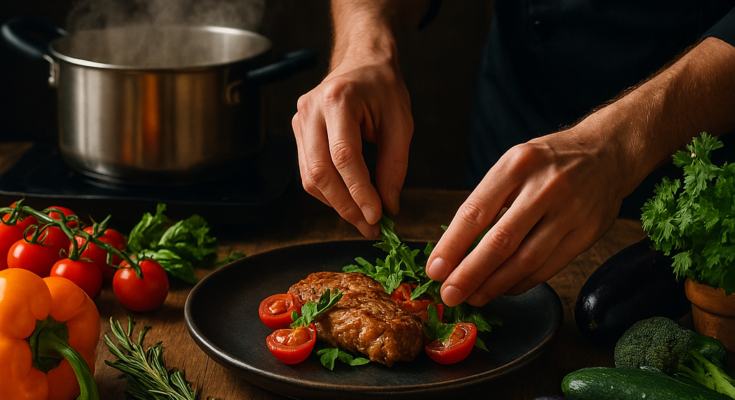Cooking: Where Art Meets Flavor in the Heart of the Kitchen
Cooking is far more than a daily chore—it’s a vibrant art form that mirrors the soul of cultures, traditions, and human creativity. Whether sizzling in a home kitchen or plating masterpieces in a Michelin-starred restaurant, cooking transcends mere sustenance. It’s a dance of flavors, textures, and colors, where personal expression meets technical skill, transforming raw ingredients into stories on a plate.
A Journey Through Culinary History
The story of cooking begins with fire. Imagine ancient humans gathered around flames, discovering how heat could transform tough meat into tender bites or turn wild grains into nourishing meals. Over millennia, this primal skill evolved into a global tapestry of techniques: roasting over open flames, baking in clay ovens, frying in aromatic oils, and steaming in bamboo baskets. Spices from the Silk Road, herbs from Mediterranean hills, and chilies from the Americas began mingling in pots, creating the diverse culinary traditions we cherish today.
Cooking as Edible Art
Every dish is a canvas. A chef’s palette? Vibrant vegetables, succulent proteins, fragrant herbs, and spices that whisper tales of distant lands. Great cooks aren’t just technicians—they’re visionaries. Think of a perfectly seared steak with a rosemary-infused crust, or a delicate sushi roll adorned with edible gold. These creations engage all five senses, turning meals into memories. It’s no wonder culinary masters like Massimo Bottura or Dominique Crenn are celebrated alongside painters and poets.
Techniques That Transform Ingredients
From rustic home kitchens to high-tech gastronomy labs, cooking methods shape our meals:
- Grilling: Where smoky char meets juicy perfection.
- Frying: A crispy golden embrace for everything from tempura to churros.
- Steaming: A gentle touch that preserves nutrients and purity in dishes like dim sum or fish en papillote.
- Searing: The Maillard reaction’s magic—creating caramelized crusts on scallops or steaks.
Each technique unlocks new dimensions of flavor, proving that how we cook is just as vital as what we cook.
Cultures on a Plate
Food is a passport to cultural heritage. Wander through a Middle Eastern souk, and you’ll taste sumac’s tang and cardamom’s warmth in dishes like shawarma and baklava. Cross into Europe, and you’ll find French sauces rich with butter, Italian pastas kissed by basil, and Spanish paellas bursting with saffron. Every bite tells a story of migration, trade, and shared humanity. Host a dinner party with global dishes, and you’ve curated a festival of traditions.
Why Cooking Nourishes More Than Bodies
Beyond flavor, cooking is an act of love. Homemade meals let you control ingredients, ditching preservatives for freshness. Imagine kneading dough for family pizza night or teaching a child to whisk pancake batter—these moments build bonds as much as they build appetites. Studies even show home cooks eat healthier, savoring more veggies and fewer hidden sugars. Plus, the mindfulness of chopping, stirring, and tasting melts stress like butter in a hot pan.
The Last Bite
Cooking is where science dances with art, and tradition shakes hands with innovation. It’s a universal language that feeds both body and soul. So next time you pick up a knife or a spatula, remember: you’re not just making dinner. You’re keeping ancient traditions alive, expressing creativity, and crafting joy—one delicious bite at a time.


